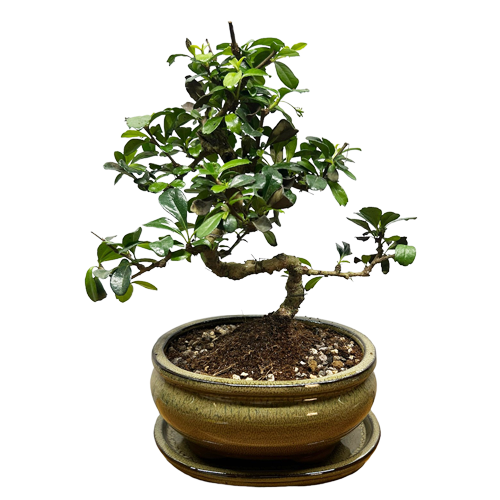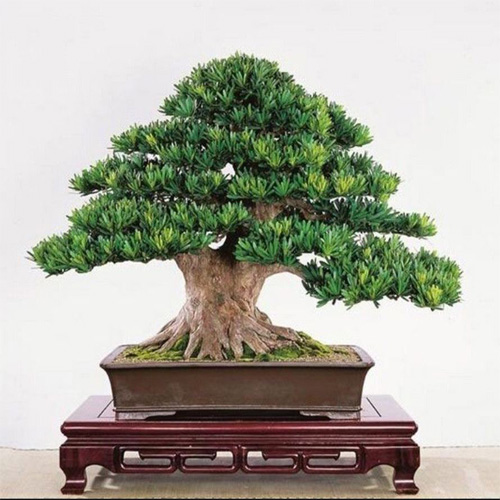Bonsai Tree for Beginners: A Simple Guide to Cultivating Your Miniature Garden
Bonsai—the ancient art of growing miniature trees—is a formative practice that blends horticulture with artistic expression. Originating in East Asia over a thousand years ago, this tradition has evolved into a hobby cherished by gardeners around the globe. It’s not just the allure of creating a tiny replica of nature that captivates enthusiasts; the dedication to nurturing a living sculpture offers a sense of accomplishment and tranquillity indoors or outdoors.
For beginners, the selection of a bonsai tree is critical to success. Some of the easiest bonsai starters are more forgiving and adapt better to indoor environments, making them ideal for novices. The key to nurturing bonsai lies in understanding the fundamental steps: choosing the right species, cultivating with patience, and providing meticulous care.
Creating the perfect bonsai is a rewarding journey of patience and creativity that starts with a beginner bonsai tree. It may seem daunting at first, but with each snip of the shears, you’ll grow not just a tree with wonderful foliage, but also your skills as a caretaker of these miniature marvels. Let’s embark on this journey together and discover the joys of bonsai.
Key Takeaways
- Bonsai is an ancient art with therapeutic benefits, inviting both beauty and calm into your space.
- Choosing a hardy species like Ficus can be perfect for beginners.
- Understanding the stages of bonsai cultivation and care is essential for thriving miniature trees.
Choosing the Right Bonsai Tree for You

Selecting the perfect type of bonsai tree for an eager beginner involves accounting for the species’ forgiving nature and your own environment. Let’s ensure you find a bonsai that thrives in your care!
Bonsai for Beginners
When we’re looking for a bonsai, we want a type of tree that won’t throw a tantrum if we miss a watering session or two. Ficus and Chinese Elm are top choices for growing bonsai due to their resilience. Indoor Ficus bonsai is a hardy species that handles conditions well and is relatively easy to care for. The Chinese Elm bonsai tree, on its part, boasts adaptability and a natural aesthetic with small leaves that make it an attractive option. Junipers are also great for beginners, especially for those who prefer to keep their bonsai outdoors, but they generally require more sunlight. Japanese Maple offers an artistic bonsai with their seasonal leaf colour changes, making them a delightful choice for novices interested in outdoor bonsai.
Indoor vs Outdoor Bonsai Trees
Popular indoor trees like the rubbery Ficus retusa carve out a peaceful green niche in your home and tolerate less-than-perfect conditions. Indoor bonsai trees usually demand bright light and a consistent temperature, avoiding the extremes. Outdoors, however, trees like the Juniper or Japanese Maple immerse themselves in nature’s rhythm, enduring the seasons and often requiring winter protection, depending on your climate.
Factors to Consider: Climate and Space
Contemplating your local climate is crucial; it influences your bonsai’s success. A juniper may love the layers of a British winter, while a Ficus might prefer your cosy living room. Assess the space—does your balcony cater to a bonsai sprawling in style, or should you consider a snug corner for a small, elegant Ficus? Choosing a tree that not only matches your care abilities but also your available space is always a good idea.
When tempted by these miniature marvels, check out a variety of vendors, from online repositories of botanical wonders to the tangible shelves of local nurseries. You can sometimes find a bonsai-in-waiting from nature itself if you have the know-how—just remember to respect local regulations and ecosystems.
Caring for a bonsai is a serene art that meshes horticulture with sculpture. With the right start, we can cultivate a bit of timeless tranquillity in our very own living spaces.
Growing and Cultivating Your Bonsai Tree
Creating a bonsai is both an art and a science. We’ll explore the right soil and pots to use, the techniques for pruning and shaping, and ways to propagate your bonsai tree. Stick with us to learn how to cultivate your own Bonsai empire.
Using the Right Soil and Pot
When we start, choosing the right pot and soil mix is crucial for your bonsai’s health. The pot should have proper drainage holes to prevent waterlogging. A good soil mixture typically consists of akadama, pumice, and organic compost. This mix ensures good drainage and aeration, which are essential for the roots.
Pruning and Shaping Techniques
Pruning is not just about size control. These miniature trees take well to pruning and with enough practice are easy to shape, encouraging growth in the right places. For your regular pruning you’ll want to follow these steps:
- Identify which branches to prune to maintain or establish your bonsai’s design.
- Use sharp bonsai scissors to make clean cuts without damaging the plant.
- Apply the wiring technique to guide branches into the desired shape, being careful not to damage the bark.
Examples of common styles include:
- Formal upright: Straight trunk with branches at regular intervals.
- Informal upright: A slightly curved trunk with a more natural branch arrangement.
- Slanting: The trunk leans to one side with branches positioned to balance the composition.
- Cascade: Trunks and branches cascade below the pot, mimicking a tree growing over a cliff.
- Forest: Multiple trees create a miniature landscape.
Propagation: Seeds or Cuttings?
Deciding whether to grow your bonsai from seed or cuttings depends on your patience and what you have access to. Seeds can take longer but offer a deep sense of achievement, while cuttings are quicker, offering a jumpstart on the growing process.
- Seeds: Sow them in well-draining soil and provide consistent moisture and warmth.
- Cuttings: Snip a healthy branch, apply rooting hormone, and plant in a suitable growing medium.
Here’s a handy table to outline the best times for each technique, depending on the species:
Technique | Deciduous Trees | Evergreen Trees | Tropical Trees |
Pruning | Late autumn | Early spring | Anytime |
Wiring | Winter | Late summer | After pruning |
Repotting | Early spring | After flowering | Mid-summer |
Defoliation | Early summer | Not recommended | Anytime |
Remember, patience is key, and no two bonsai trees are the same; they’re as individual as we are!
Caring for Your Bonsai Tree

Bonsai care is both an art and a science. We’re here to guide you through each aspect, from watering to feeding, to ensure your bonsai remains a stunning miniature tree.
Watering Your Bonsai Properly
Watering is crucial; each bonsai tree has unique needs based on its species and environment. To avoid complications like root rot, we should check the topsoil daily. If the soil feels dry, give your tree a good soak until water runs out of the drainage holes. Never let the soil become completely dry, and equally, don’t water too frequently which can lead to overwatering.
Dos:
- Use soft water if possible.
- Water in the morning to reduce evaporation.
Don’ts:
- Don’t water on a strict schedule; adjust according to the soil’s condition.
The Importance of Lighting and Humidity
Bonsai trees need plenty of light, so positioning is key, especially for indoor bonsai. Place your tree where it can receive indirect sunlight most of the day. Humidity is also important; a humidity tray can help create the microenvironment your bonsai craves, and protect surfaces if kept indoors.
Dos:
- Rotate your bonsai to ensure even growth.
- Use fluorescent or grow lights if natural light is insufficient.
Don’ts:
- Don’t place bonsai in direct, scorching sunlight.
Seasonal Care and Protection from Pests
As we cycle through the seasons, our care strategy must adapt to ensure flowering bonsai. Winter might require protection from frost, while summer could call for additional shade and watering. Vigilance for pests like spider mites or scale insects is essential. Use suitable bonsai-specific insecticides and always inspect new plants before introducing them to your bonsai garden to avoid cross-contamination.
Dos:
- Check your bonsai frequently for signs of pest infestation.
- Adjust care based on the season.
Don’ts:
- Don’t ignore the first signs of pests or disease.
Feeding: When and How to Fertilise
Fertilising your bonsai is vital for its growth and vitality. A balanced liquid fertilizer is usually recommended, typically applied every four weeks during the growing season. In winter, we should reduce or stop feeding, depending on the species of bonsai.
Dos:
- Follow the specific dosage instructions for your bonsai species.
- Opt for a balanced NPK (nitrogen, phosphorus, potassium) fertilizer ratio.
Don’ts:
- Don’t over-fertilise, as this can damage the roots.
Common Problems and Solutions:
- Overwatering: Leaves turning yellow and soft? Let the soil dry out a bit more between watering.
- Under-watering: Dry, crispy leaves? Increase the frequency of your watering, ensuring a thorough soak each time.
- Yellowing Leaves: Could indicate overwatering or a lack of nutrients. Assess your watering habits and consider a soil test.
- Fungal Infections: Often appear as discoloured spots on leaves. Isolate the affected bonsai and treat it with a fungicide.
Lastly, let’s make sure we’ve got all the tools we need for proper bonsai care:
- Scissors: For precision trimming of leaves and branches.
- Wire: To train and shape the branches and trunk.
- Pots: With adequate drainage to promote healthy root growth.
- Soil: Specific to bonsai, ensuring proper drainage and nutrient mix.
- Fertilizer: A balanced liquid formula works wonders.
By keeping these pointers in mind, we ensure our bonsai not only survives but thrives. Let’s keep it simple and enjoy nurturing these living works of art.
Final Thoughts for the Journey Ahead
Embarking on the bonsai journey is both a creative endeavour and a form of self-expression. We’ve explored the fundamentals: selecting the right species that aligns with your climate and the quintessential techniques of cultivation, pruning, and care. Bonsai isn’t just gardening; it’s an art form that connects us with nature and allows for relaxation and mindfulness.
So why not start your own bonsai tree? Sharing your progress with others can be incredibly rewarding and inspiring. Check out forums or social media groups to connect with fellow enthusiasts and exchange tips. Each step you take adds to your gardening proficiency and brings a new layer of love and appreciation for these small yet majestic embodiments of nature. Remember, all bonsai experts were once beginners. So, grab your tools, pick a tree, and let the creativity flow!
FAQs
Navigating the bonsai world can be as intricate as the trees themselves, but we’re here to untangle some of that complexity with answers to common beginner questions!
Certainly! Creating a bonsai at home involves selecting a suitable tree species, preparing a bonsai pot with well-draining soil, and shaping your tree with pruning techniques. Over time, regular maintenance, such as trimming and watering, will encourage your bonsai to take on its miniature form.
We suggest picking up titles like “The Bonsai Beginner’s Bible” by Peter Chan or “Bonsai Basics” by Colin Lewis. These books offer a wealth of information and are a wise choice for beginners with clear instructions and insightful tips.
To start, you’ll need a bonsai pot, well-draining soil (like akadama or a mix with lava rock), and a basic toolkit comprising pruning shears, wire cutters, and perhaps a small rake. Carefully pot your chosen tree, ensuring it’s securely positioned, then start the shaping process with your tools.
Juniper bonsai trees are robust and quite forgiving for beginners. Their manageability comes from their adaptability to various environments and their resilience to common bonsai pitfalls, making them a top choice for those starting out.
Growing a bonsai tree from seedling to full maturity is a long-term endeavour, often taking upwards of ten years. Patience is key, as bonsai is as much about the journey as the result, with each year bringing its own rewards in the form of growth and refinement.
